Recently Nike revised the trail shoe version of their Pegasus 36 line of running shoes.
The Nike Air Zoom Pegasus 36 Trail Running Shoe is a moderate option for an off-pavement trail running shoe.

What do we mean by that?
That’s what we’ll discuss in this review.
Where can you get it? Road Runner Sports:
All right, let’s take a look.
Nike Air Zoom Pegasus Trail Running Shoe Hands On Review on YouTube
We featured this shoe as part of our Nike Trail Shoe Shootout 2020:
Nike Air Zoom Pegasus 36 Trail Running Shoe – Sizing, Fit, and Feel
This shoe runs true to size.
My normal size is a Men’s 11 – and this shoe fits perfect in that size.

That said, as with many of Nike’s running shoes, it is not a wide shoe.
So, if you have wide feet, you may need to go 1/2 size up.
On the upside, there’s probably a few brick and mortar retail stores you can find this shoe in – so we’d recommend you try it on first, if possible.
(That said, online returns are easy – it’s just frustrating to have to wait for shipping back and forth.)
Nike Air Zoom Pegasus 36 Trail – Features
Let’s take a tour of the features of this shoe.
First, this is an “Air Zoom” shoe.
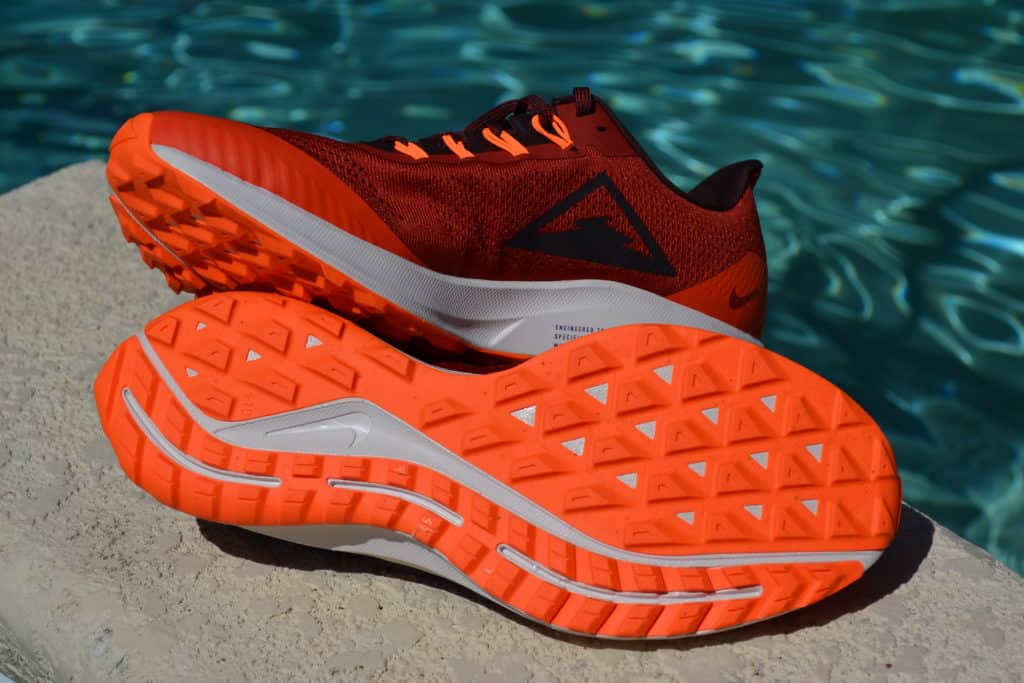
Nike’s Zoom places one or more “air bags” in the midsole. These pressurized air units also have tensile fibers strategically placed within.
The short of it is that it gives you cushion – with some energy return after your foot compresses the air bag.
This shoe has two zoom units – one up front, and one in the heel.
As such, it has a decent amount of cushion.
(If you need more cushion, we’d recommend you look at Nike’s React foam system.)
As a trail running shoe, it also includes a fairly aggressive outsole.
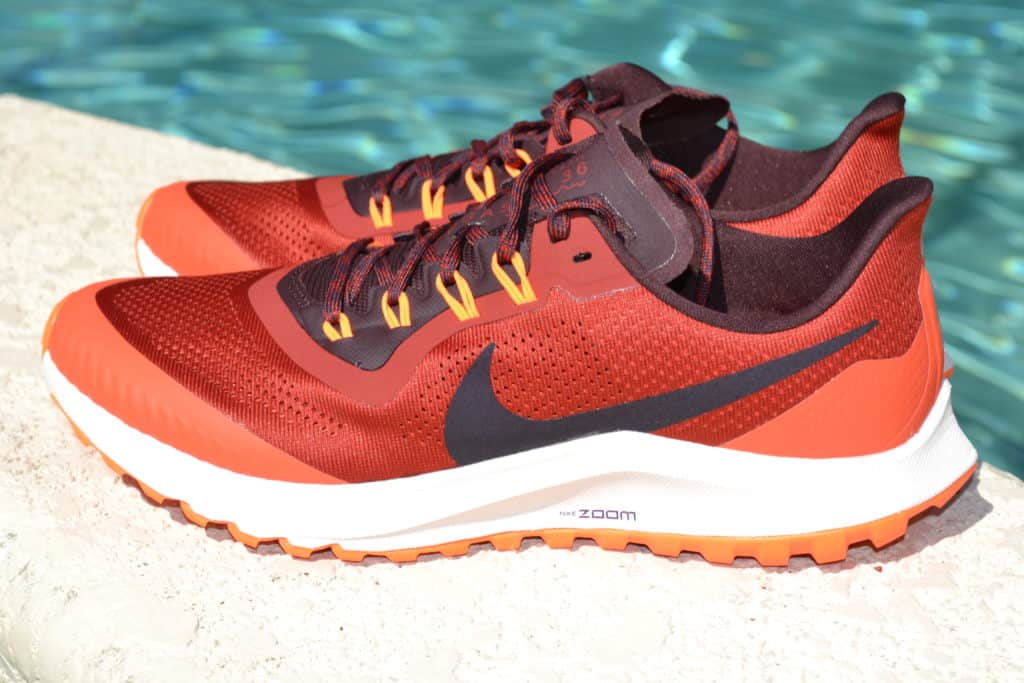
The outsole is foam and rubber (the orange part in these pictures is the tough rubber for durability.)
This is a pretty good outsole for off-road usage – but it’s not the most radical outsole either – let’s look at some alternatives later in this article.
The Pegasus uses Nike’s Flywire system to help make for a secure fit. Those are the orange colored Vectran filaments that you see looped around the laces in these photos.
How does it work? Tighten the laces and the Flywire filaments will tighten up as well – but they run throughout the body of the shoe.
Let’s examine the heel next.
While the collar looks to come up fairly high – I personally get a small amount of heel slippage in this shoe.

(Whether or not you’ll experience the same depends on your shape of your heel – in my opinion.)
Nike Air Zoom Pegasus 36 Trail versus Regular Nike Air Zoom Pegasus 36
This trail shoe has a non-trail brother (or sister?)

The regular running shoe version has a tamer outsole, and lacks the rubber protection wrap on the front edge of the shoe.
Otherwise, it is very much the same, down to the heel to toe drop of 10mm.
So, if you like the shoe, but will be sticking to the trail or pavement, this shoe might be a better choice for you.

Earlier, I mentioned that I get some heel slippage in the Pegasus 36 Trail – and I do for the non-trail version also.
That makes sense, because the heel/collar are the same on both shoes.

Nike Air Zoom Pegasus 36 Trail Running Shoe versus Nike Wildhorse 6
Let’s compare this shoe to a more radical trail running shoe – the Nike Wildhorse 6.
This shoe, which is named for a popular remote running trail in Oregon, is meant for hardcore trail running.
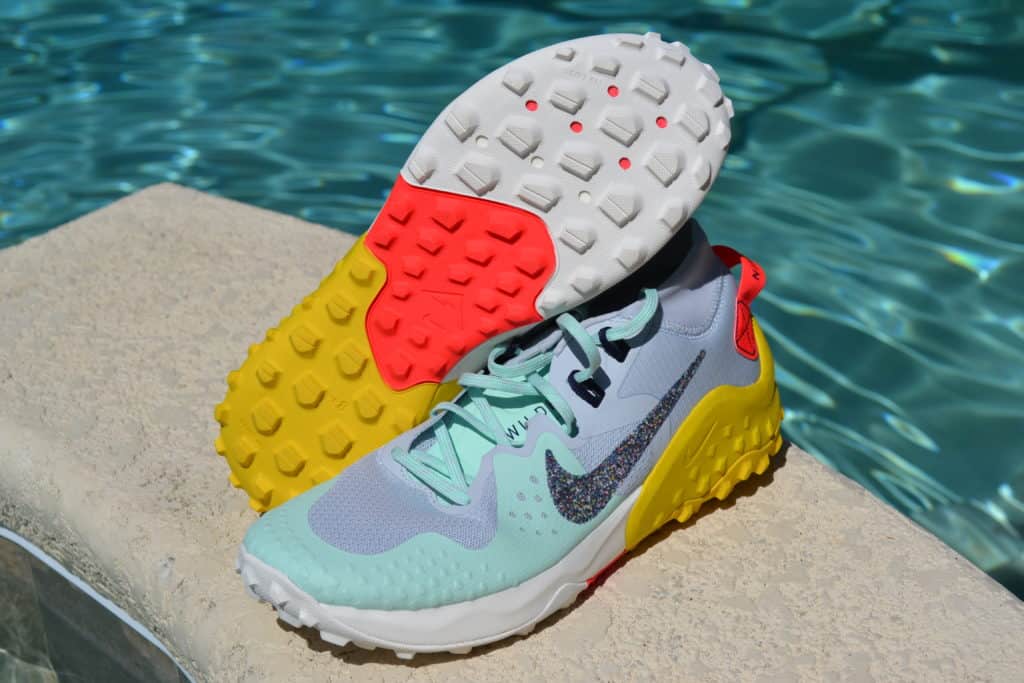
You’ll notice it has a very aggressive, boot-like tread pattern on the shoe.
It has an all-rubber outsole with deep, widely spaced lugs – so they won’t get clogged with mud.
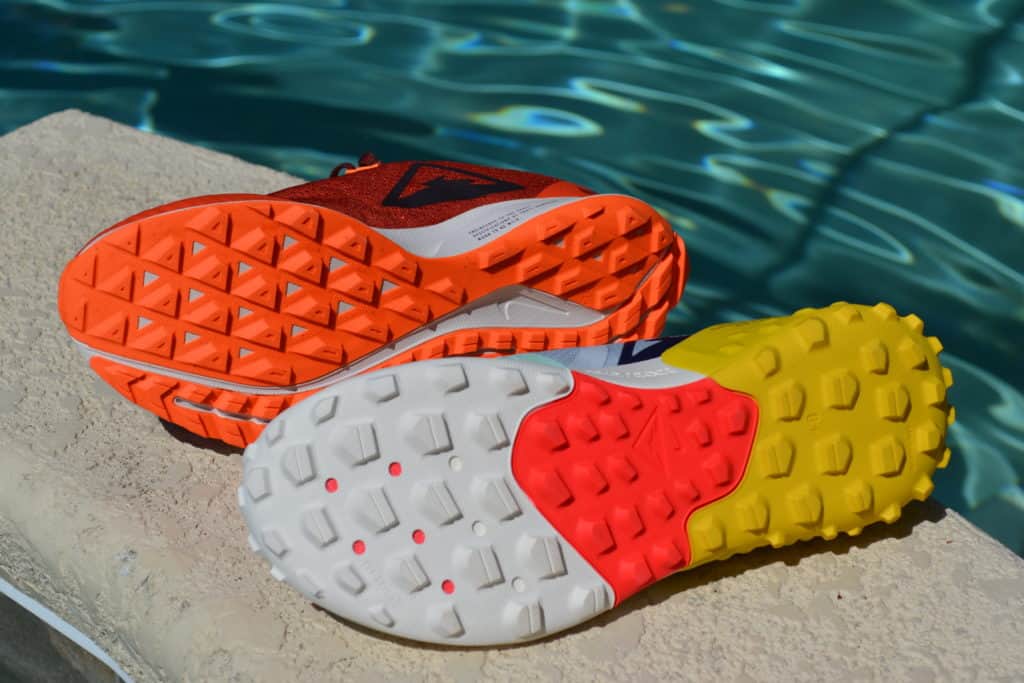
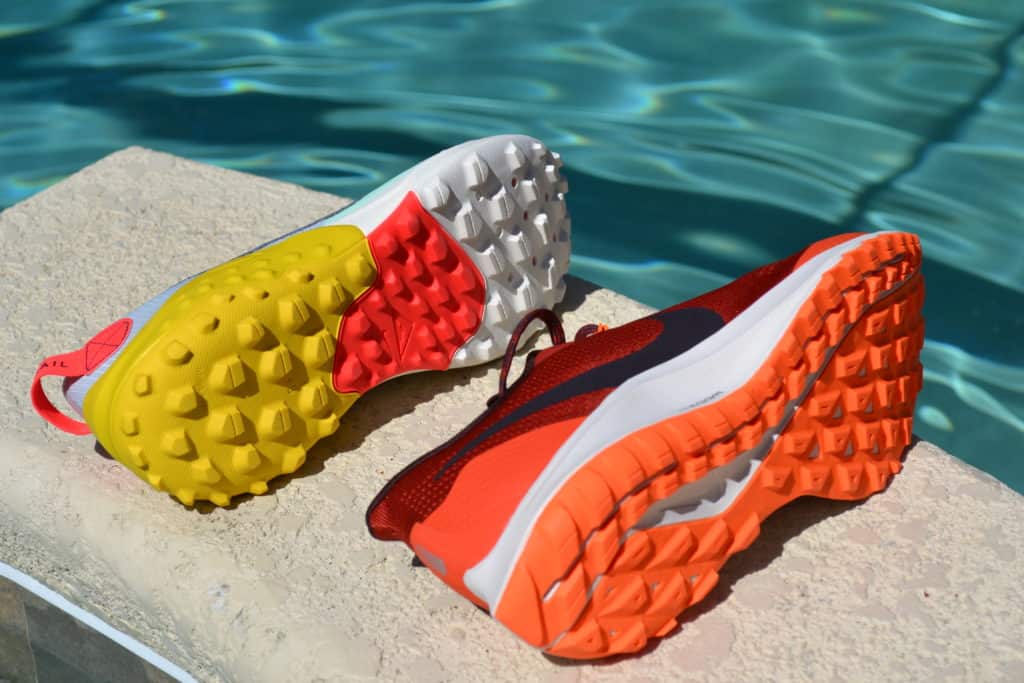
What you can’t see here is that the Wildhorse uses a lot of React foam.
As such, the Wildhorse has a very smooth and comfortable amount of cushion.

If you are looking for an aggressive trail running shoe, and you want or need soft cushioning – this is your choice.
The Wildhorse has a relatively tame 8 mm heel to toe drop.
Like the Zoom Pegasus 36 Trail, the Wildhorse is classified as a neutral running shoe.

Both shoes have a mechanism to ensure a secure fit – the Pegasus uses the Flywire system (those are the orange colored filaments looped around the eyelets of the shoe.)
The Wildhorse uses a different system – Nike calls them “Fit bands” but they perform a similar purpose.
In short, if you need a lot of cushion and you need a more aggressive trail running shoe – the Nike Wildhorse 6 would be a better choice.
Nike Air Zoom Pegasus 36 Trail Running Shoe versus Nike Air Zoom Terra Kiger 6
Here’s another shoe for serious off-pavement running.
The Nike Air Zoom Terra Kiger 6 is now in it’s 6th version.
Like the Pegasus shoe, this is an Air Zoom shoe.

That means it has the pressurized air unit within.
One big difference though – the Terra Kiger 6 has only a single Zoom unit in the heel.
Up front, in the forefoot, is a segmented rock plate.

The purpose of that is to protect your forefoot when you land on a pebble or stone.
With less Zoom units, this shoe has noticeably less cushion in the forefoot as compared to the Pegasus.
But, it also has a more aggressive tread on the outsole.

There are deep boot-like lugs – but only in the front and heel.
In the center is a rubber traction “pod” – as described by Nike.
How might this help? Imagine running somewhere with rocky surfaces and large stones – all those boot lugs aren’t going to help with tracion – in fact they will be a detriment.
That wet-traction rubber pod will give you grip on those sorts of surfaces.
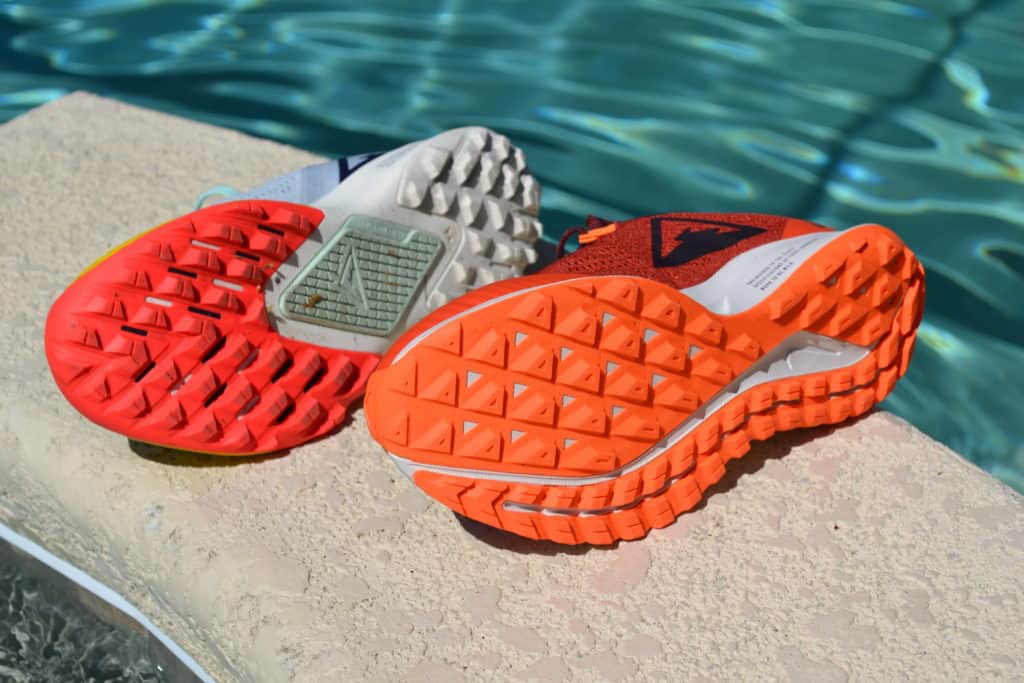
As such, we’d recommend the Terra Kiger 6 for use in rocky terrain.
For me personally, it doesn’t have enough cushion with the single Zoom unit – and I’m in Florida where stones and rocks are hard to come by.
(This state is basically one giant sand bar – at least were I’m at.)

Nike Air Zoom Pegasus 36 Trail Running Shoe – In Summary
The Nike Air Zoom Pegasus 36 Trail Running Shoe is an off-road version of Nike’s Pegasus 36 running shoe.
It is true to it’s non-trail relative but has a more aggressive outsole and better protection up front along the edge of the foot.
This shoe is not a radical off-road shoe – as witnessed by the relatively mild outsole.
But, this makes it more applicable to on pavement use, and it has decent cushion thanks to the dual Air Zoom units in the forefoot and heel.

Photo Credits
Some product photos on this page are property of Nike, Inc.
This website is not affiliated or associated with CrossFit, Inc. CrossFit is a registered trademark of CrossFit, Inc.





